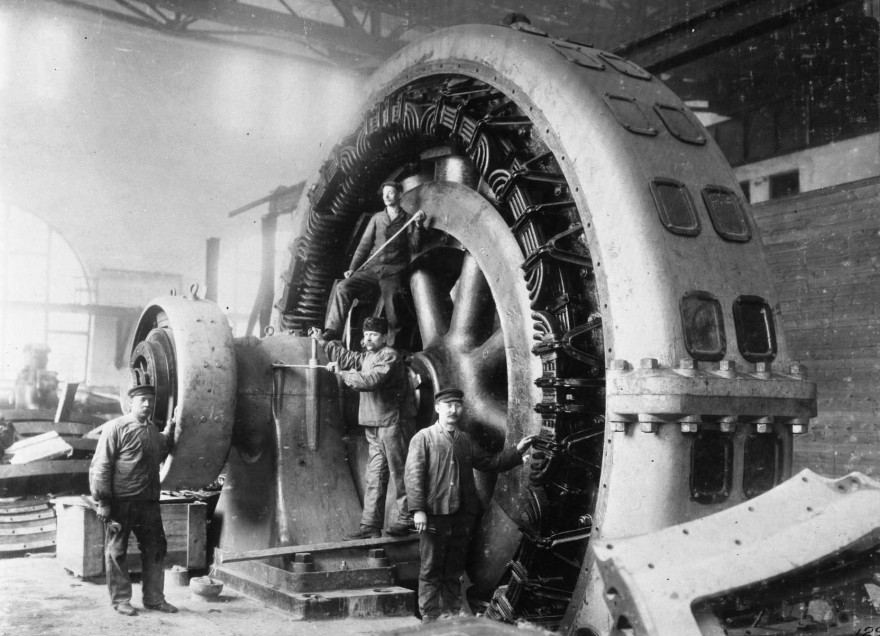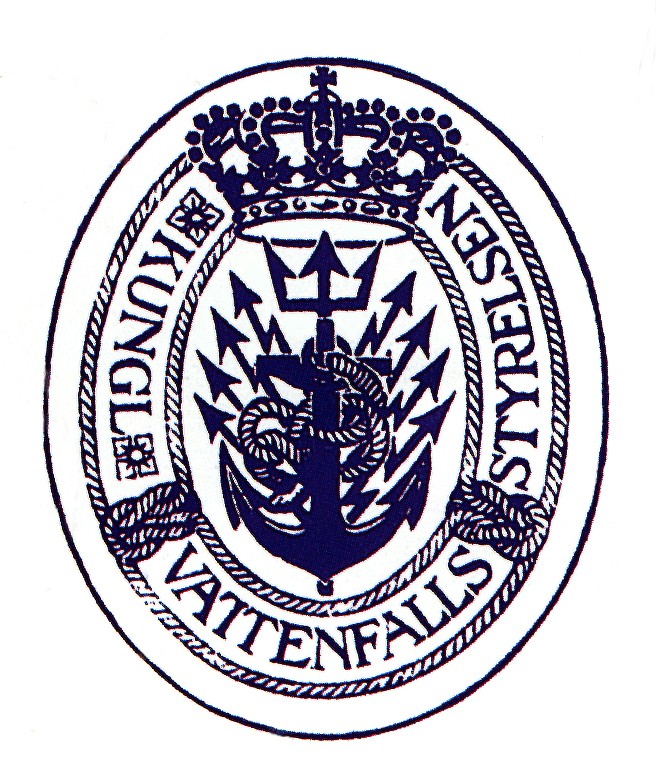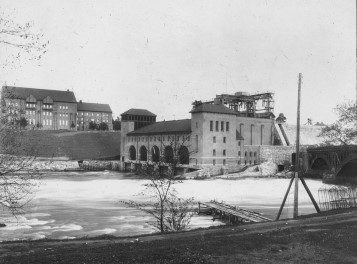
The foundation of Vattenfall
Vattenfall is said to have been the world's first state-owned power producer. The journey to reach that point was lined with social debates and legal processes, and a large dose of entrepreneurship.

Royal Trollhätte Canal and Waterworks, 1905–1908 Logotype. Year: 1905 | Place: - | Creator: Okänd | ID: VF000165
During the 1890s, a struggle between the state and private players commenced regarding who was entitled to expand the Trollhätte streams. Traditionally the central flow of a stream, known as 'kungsådra' (the King's vein), had to be left open for public purposes. The state, therefore, argued that the right to use this lay with the crown. But according to the legislation at the time, the owner of a river bank could oppose the expansion of a power plant. Thus, it was unclear who had the right to extract the hydropower.
Following lengthy legal processes, in 1901 the Supreme Court awarded the crown – the state – most of the water rights in the Trollhätte falls. In order to exploit this, the state purchased Nya Trollhätte Kanalbolag (New Trollhätte Canal Company), which owned the eastern bank, in 1905. The company's Managing Director, Vilhelm Hansen, then became the head of the newly formed Kungliga Trollhätte kanal- och vattenverk (Royal Trollhätte Canal and Waterworks).
Hansen was a successful and innovative engineer, a driven negotiator, and a far-sighted business leader. He was also a major in the civil engineering corps. He had previously been in charge of Stockholm's waterworks, where he solved the issue of how the city of Stockholm could secure its future water supply. As a result, a power station was constructed at Bornsjön – the first in a series of power stations that Hansen would build. Hansen was appointed Managing Director of Nya Trollhätte Kanalbolag in 1898, and held the post alongside his managerial position at Stockholm's waterworks.
The state becomes a power producer
The actual launch of the state's power station activities came in May 1906. The government’s Waterfall Committee, set up many years earlier, argued that the state should lease out the water rights at the Trollhätte falls. Hansen argued forcefully that the state itself should exploit the hydropower, because it would be a profitable business. The Swedish parliament's standing committee agreed with Hansen: 'The state can thus expect a direct income at considerable sums, and of even greater importance to the public is undoubtedly the national economic benefit from providing industry with the Trollhätte power as a powerful factor in its development.' Vattenfall was now also able to start exploiting other hydroelectric power sources in Sweden.

Olide power plant. Year: 1911 | Place: Trollhättan | Creator: Okänd | ID: VF000166

Vattenfall logotype 1909–1934. Year: 1909 | Place: - | Creator: Okänd | ID: VF000168
Hansen lost no time. His motto was 'it's better to win time than court cases'. Despite several ongoing legal processes, plans were made to expand the Trollhättan power plant – Olidan – which would go on to become the largest in Sweden. By 1907 there was already a concrete development proposal that was subsequently approved by the Swedish parliament. At the same time, Hansen was negotiating with several locations to supply them with electricity. The first agreement was signed with the town of Skara in 1907. The first deliveries from a makeshift hydroelectric plant began the following year.
Following the success of the power plant in Trollhättan, the Canal and Waterworks was converted into Kungliga Vattenfallsstyrelsen (the Royal Waterfall Board) in 1909. Its primary purpose was to provide industry with electricity at competitive prices. Vattenfall is said to have been the world's first state-owned power producer – the early and extensive government involvement was undoubtedly unique.
Quick facts - Vattenfall's Director General/CEO
- Vilhelm Hansen, 1909-1928
- Gösta Malm, 1928–1938
- Waldemar Borgquist, 1938–1947
- Åke Rusck, 1948–1958
- Erik Grafström, 1958–1970
- Jonas Norrby, 1970–1985
- Carl-Erik Nyquist, 1985–2000
- Lars G Josefsson, 2000–2010
- Öystein Löseth, 2010–2014
- Magnus Hall, 2014–2020
- Anna Borg 2020–
Video player requires marketing cookies.
To view this content please click here to allow marketing cookies.
How it all started (in Swedish)




